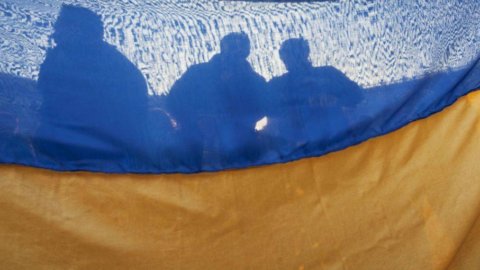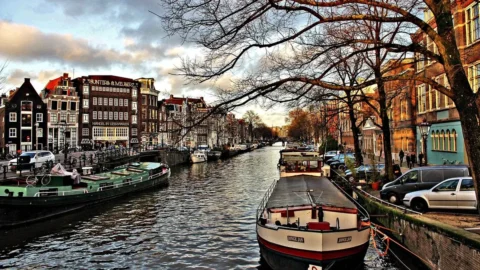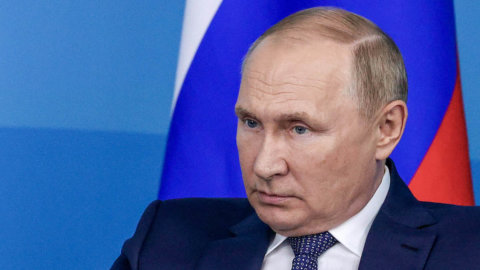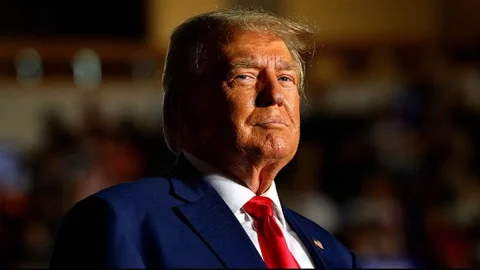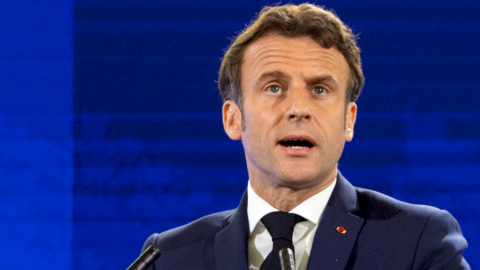“Geography can be difficult. This is a guide for Russian soldiers who keep getting lost and 'accidentally' entering Ukraine”. No, it is not, as it might seem, a joke by Maurizio Crozza; a joke which, given the tragedy unfolding in that country, might have been deemed out of place. No, it is, more simply, a tweet. Posted last Wednesday, much less trivially, on "Canada at NATO", the official website of the Canadian delegation to NATO, the military alliance between Europe and North America (the United States and Canada), established in 1949 , shortly after the end of the Second World War, to strengthen the defense of Western European and North American countries against Russia and the other states that made up the Soviet Union.
One wonders whether this was an inopportune initiative by the Canadian delegation of the Atlantic Pact. Inappropriate because implemented by an office which, in fact, is the diplomatic representation of a sovereign state to an international organization. And in diplomacy, it is known, a "diplomatic" language is used. Perhaps some may think so. But, on reflection, paraphrasing Carl von Clausevitz ("War is but the continuation ofpolicy by other means”, is one of the best-known quotes attributed to the Prussian military theorist and writer of the early nineteenth century), one could say that today the tweet is a form of political propaganda that is increasingly supplanting (Renzi docet) the communiqué or the conference press.
Of course, it is legitimate to wonder about the effectiveness of tweets in terms of political communication addressed to all citizens. In a propaganda key, the tweet works, and how! Just like in commercial advertising the slogan works. But it is equally legitimate to expect a greater breadth of content in political communication. But there is no doubt that the often inevitably Manichean synthesis of the tweet ends up inciting the recipients to choose between "for" and "against".
An arrival point which, in the light of the more than thirty thousand commentary tweets declared (the vast majority, it must be considered, "pro" Ukraine), was probably the objective of the authors. Who, whatever their initial intentions were, have managed to give life (at no cost) to a movement of opinion that could die out in a few days, or (more probable hypothesis, given that the Russia-Ukraine conflict shows no signs of dying out) expand even further by easily overcoming geographical and linguistic borders (the latter a little less).
Then there is another new aspect, in addition to the means of communication chosen, which certainly contributed to the effectiveness of the message: the ironic, perhaps even sarcastic tone of that tweet. To both anonymous recipients and Russian military and political leaders. The two phrases (whether ironic or sarcastic) were strengthened, by way of superimposition, in the same tweet by a simple but very clear map where the Russian territory, highlighted in red, contains the word RUSSIA, while on the area corresponding to Ukraine, which is in deep blue, it is writtenNOT RUSSIA…
The origin of the Canadian tweet had been the trespassing, the previous day, of ten Russian soldiers patrolling the border who had entered - "by mistake", as it was later read in the Moscow newspapers which cited military sources - into Ukrainian territory . "Error" then repeated the next day by two other Russian soldiers..
Inevitably, that tweet angered more than one in Moscow. Where evidently - not being able to reply Putin himself or one of his ministers to a tweet that would certainly have been defined by Canadians as "a joke" - it was decided (a "diplomatic" choice...) to entrust the Russian delegation to NATO with the answer, whose offices are located in the same Brussels location as those of their Canadian colleagues.
The answer was equally sarcastic, also due to what in the Canadian map was considered a geographical error by the Russians: having also colored the Crimean peninsula overlooking the Black Sea in deep blue. Since six months ago Crimea was been annexed by Russia "manu militari".
So in the map attached to the reply tweet to Canadians, the territory of Crimea is colored pink like the rest of Russia. And as a comment, the Russian delegation writes: "Let's help our Canadian colleagues to keep up to date with the contemporary geography of Europe".
Apart from pin pricks like these, which are still a sign of the times, the Canadian tweet has opened up a digital front which sees the involvement of prominent personalities from some European countries, in addition to the one marked by the border between Ukraine and Russia, where people fight and die. Characters such as Dalia Gribauskaité, recently confirmed president of the Republic in Lithuania, a small country which borders the Russian Bear to the east and its coast with the Baltic to the west is interrupted by the enclave of another state, Russia to be precise. “We have to say clearly – these are her exact words entrusted to the network – that, if Russia is at war against Ukraine, it is as if she were at war against Europe. For this we must help Ukraine militarily so that it defends itself ”.
Already two weeks ago, the secretary general of NATO whose mandate was about to expire, the Danish Anders Fogh Rasmussen, on a visit to Copenhagen, had highlighted, with regard to the invasion of Crimea, that "for the first time since the Second World War a European country yes, he forcibly seized the territory of another country.
And finally, in response to the very recent very clear threat from Vladimir Putin (“Better not to joke with us. Russia is one of the major nuclear powers…”, he said in reply to the accusations of invasion of the eastern region of Ukraine), it seems certain that Britain has proposed the very short-term creation of a rapid reaction force in response to the Russian intervention in Ukraine. The official announcement should be made by Rasmussen this week on the occasion of the NATO summit in Newport, Wales.
In this regard, the latest issue of the Financial Times states that Denmark, Latvia, Lithuania, Estonia, Norway, Holland and in all probability Canada have joined David Cameron's project – a division of a thousand men. Whose Foreign Minister John Baird entrusted the network with a message stating that “Russia's acts of aggression and intimidation against Ukraine require a collective reaction. Canada and its allies must speak up”.

